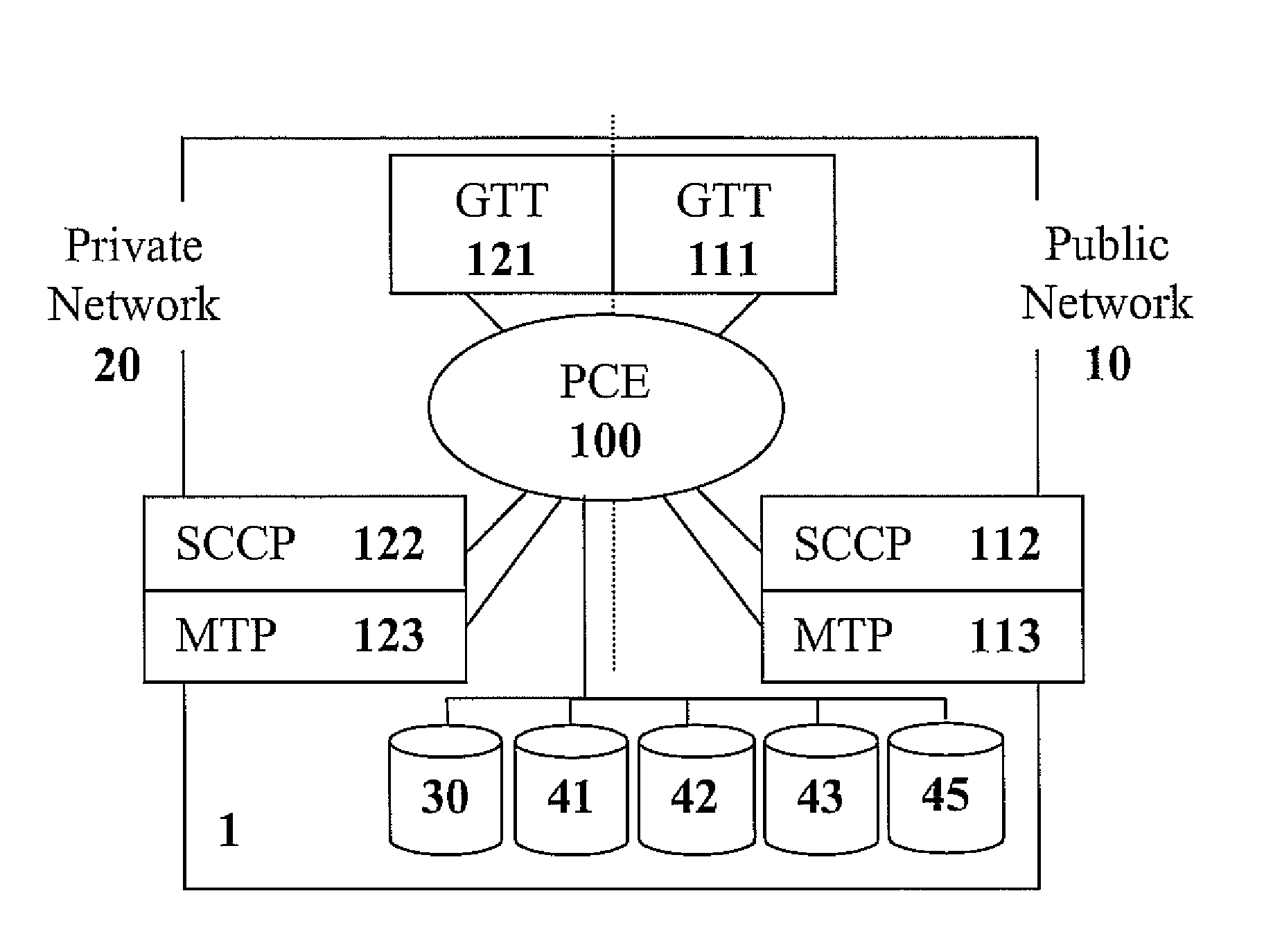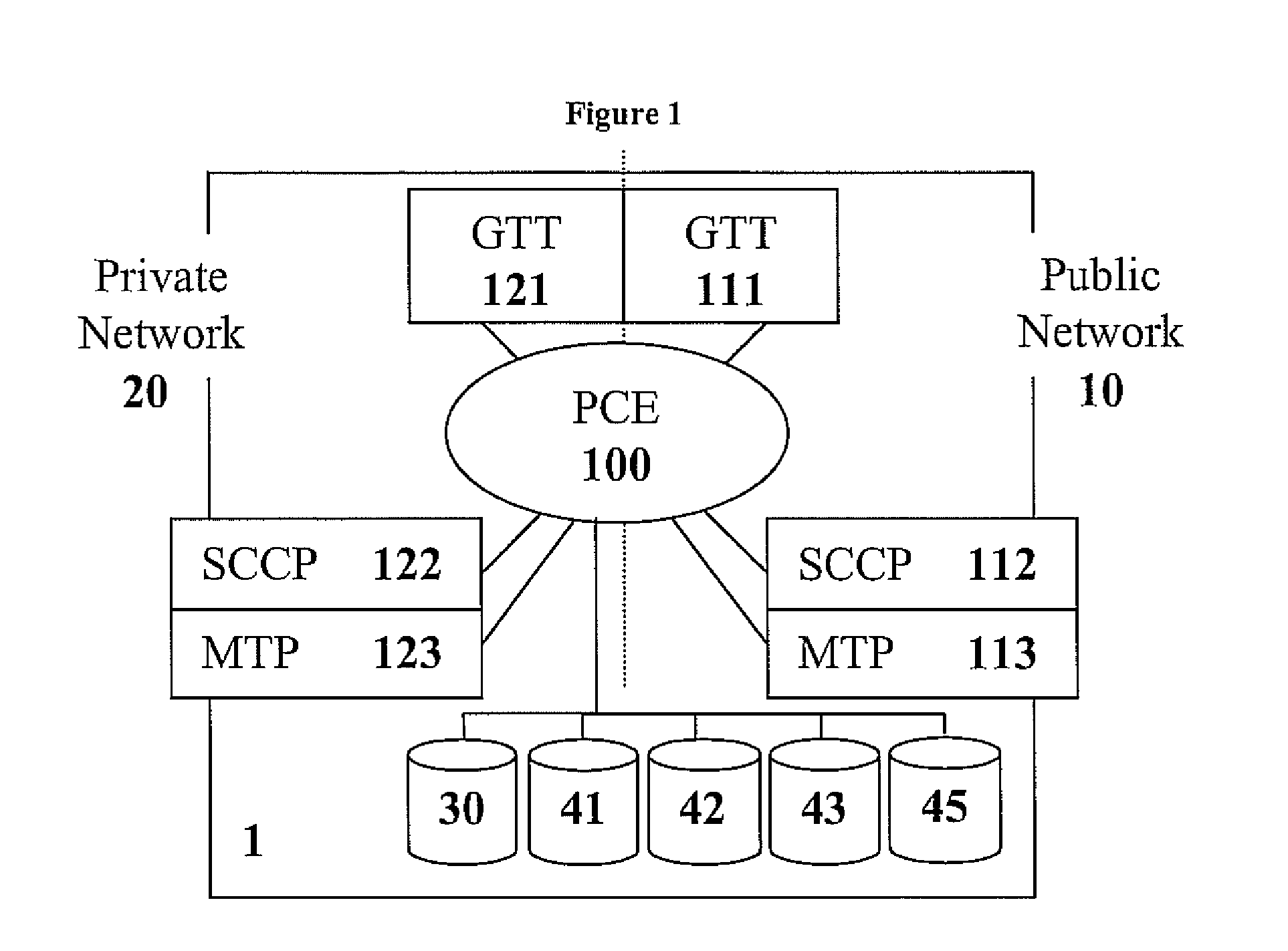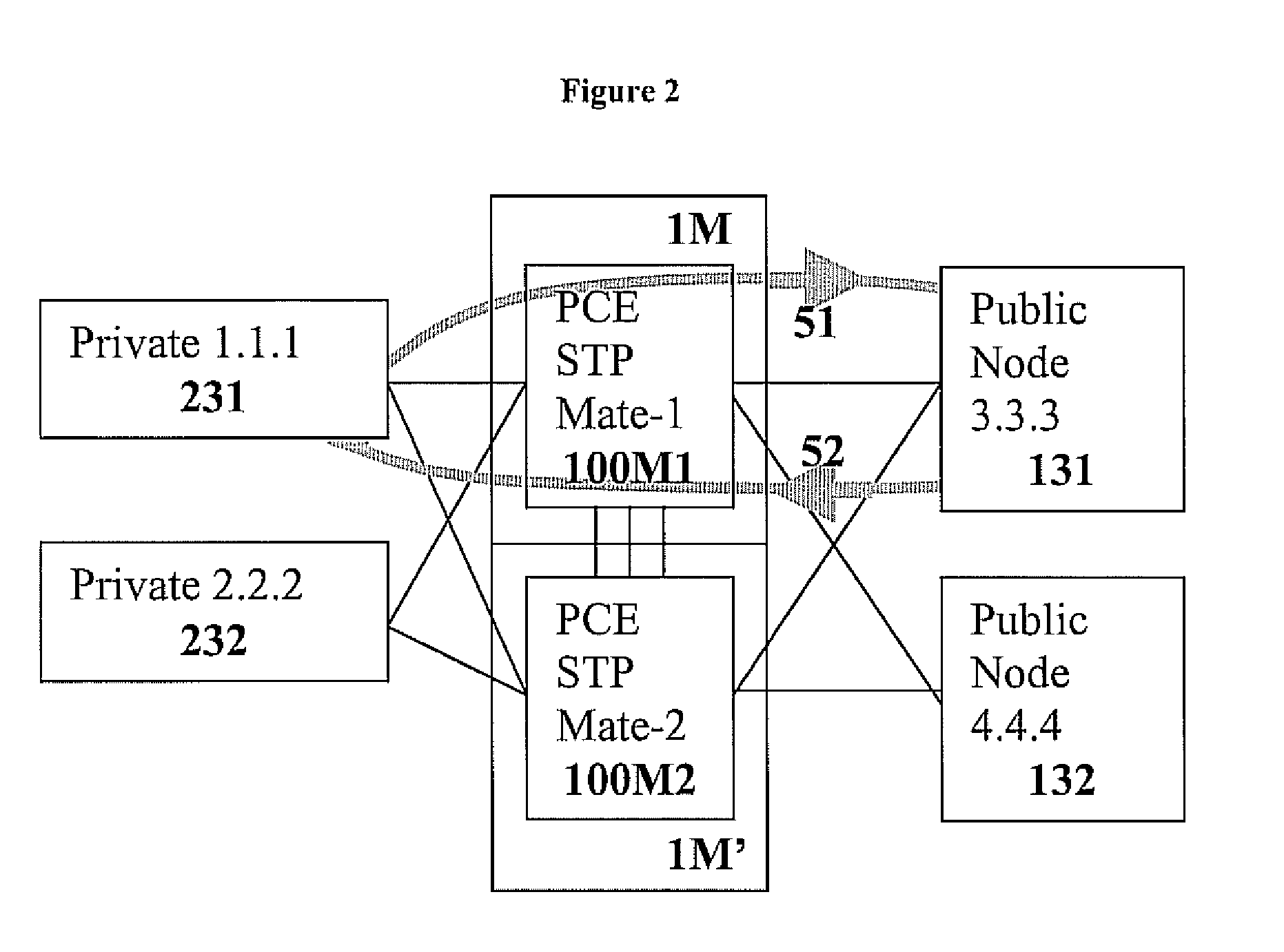Point code emulation for common channel signaling system No. 7 signaling network
a signaling network and common channel technology, applied in the field of point code emulation apparatus, can solve the problems of very expensive and extended services of creating such new point codes, and achieve the effect of expanding and expanding the network
- Summary
- Abstract
- Description
- Claims
- Application Information
AI Technical Summary
Benefits of technology
Problems solved by technology
Method used
Image
Examples
Embodiment Construction
[0021]Referring to FIG. 1, a system 1 is a signal transfer point (STP) in a SS7 signalling network. The system 1 comprises a point code emulator 100 interacting with SCCP 112 and MTP 113 in Public Network 10 side and with SCCP 122 and MTP 123 in Subnet (or Private Network) 20 side. The system 1 further comprises GTT 111 at Public Network 10 side and GTT 121 at Private Network 20 side. The system 1 may interface with more than two network segments or subnets. For each subnet, the system 1 would further comprises corresponding SCCP (not shown) and MTP (not shown), and corresponding GTT (not shown), in communication with PCE 100.
[0022]The system 1 further comprises at least one structured data storage means 30, such as database, embedded within, externally accessible from PCE 100, or internally accessible within the system 1 for recording, managing and querying point codes and trunk mappings for each subnet the system 1 is connected to, the data including, but not limited to, Public No...
PUM
 Login to View More
Login to View More Abstract
Description
Claims
Application Information
 Login to View More
Login to View More - R&D
- Intellectual Property
- Life Sciences
- Materials
- Tech Scout
- Unparalleled Data Quality
- Higher Quality Content
- 60% Fewer Hallucinations
Browse by: Latest US Patents, China's latest patents, Technical Efficacy Thesaurus, Application Domain, Technology Topic, Popular Technical Reports.
© 2025 PatSnap. All rights reserved.Legal|Privacy policy|Modern Slavery Act Transparency Statement|Sitemap|About US| Contact US: help@patsnap.com



